Welcome home to Elysian Heights! This residential neighborhood in northern Echo Park is hilly, verdant, a bit like Laurel Canyon, with a touch of Mt. Washington, and a dab of Topanga thrown in, but all its own.
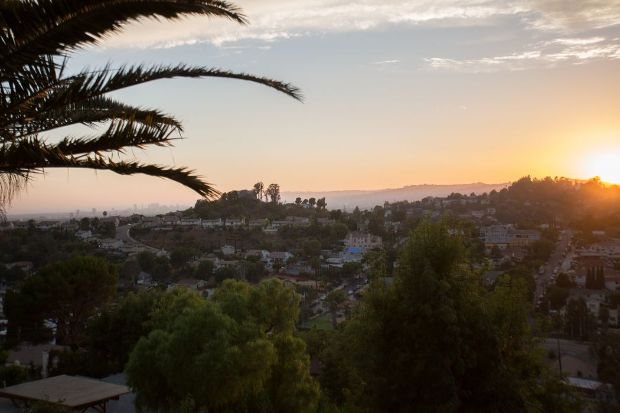
Elysian Heights borders Elysian Park to the north and commands wonderful views of downtown and in some cases all the way out to the ocean, not to mention great vantage points for summertime fireworks at Dodger Stadium. Elysian Park is Los Angeles’s oldest public park and, at 575 acres, its second largest after Griffith Park. Elysium in Greek means Paradise. Read on to see a history of the neighborhood and how it received its name.
In 1769, Gaspar de Portola and Father Juan Crespi camped on the river bank opposite Buena Vista Hill near the North Broadway Bridge entrance to Elysian Park. Yang-Na Indian villagers from the creeks of Solano Canyon and the current location of the Los Angeles Police Academy greeted the Spaniards with native refreshments. In 1781, the Pueblo of Los Angeles was officially established by Spanish California Governor Felipe de Neve with the Royal Grant of 4 square Spanish leagues translated into 28 square miles or about 17,000 acres of Pueblo Lands. Today, of this public land grant, Elysian Park is the last remaining large piece. All else has been auctioned off or given away. One of the first American official acts was the Ord Survey of 1849 to record the boundaries of these Pueblo Lands so they could be auctioned to produce city revenue. Elysian Park was then known as Rock Quarry Hills for the building stone mined in the area. But instead of being sold, the Rock Quarry Hills area were “reserved” for public purpose and withdrawn from public auction. In 1886, the Mayor and City Council of Los Angeles dedicated the Rock Quarry Hills as a city park forever, and renamed it Elysian Park.
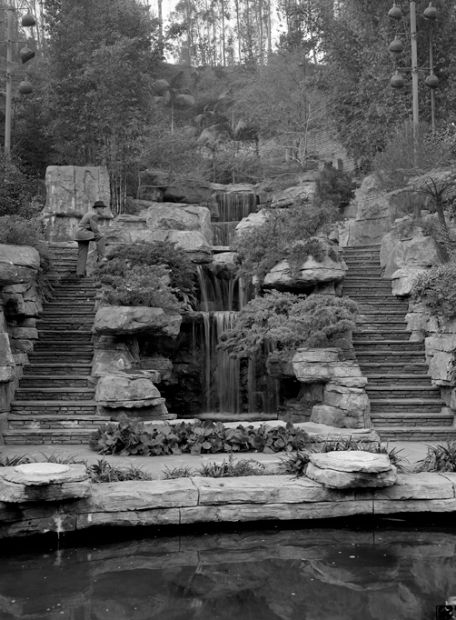
“That the real property located in the city of Los Angeles and owned by the city of Los Angeles hereinafter described, is hereby set apart for the use of the public as a Public Park, and is forever dedicated to the Public as such park.” – 1886 City Ordinance Number 218 signed April 5 by Mayor E.F. Spence
Above Elysian Park to the north is, of course, Elysian Heights. But we didn’t always call it Elysian Heights. Before the Glendale Freeway was built, it was also part of the neighborhood known as Edendale.
In the opening decades of the 20th century, in the era of silent movies, Edendale was widely known as the home of most major movie studios on the West Coast. It was home to the Keystone Kops and the site of many movie firsts, including Charlie Chaplin‘s first movie, the first feature-length comedy, and the first pie-in-the-face. The district’s heyday as the center of the motion picture industry was in the 1910s but by the 1920s the studios had moved elsewhere, mostly to Hollywood, which would come to supplant Edendale as the “movie capital of the world.”
In the years prior to World War II, Edendale had a large artist community and a large communist community. Many of its residents were transplants from the Eastern United States or the Soviet Union.
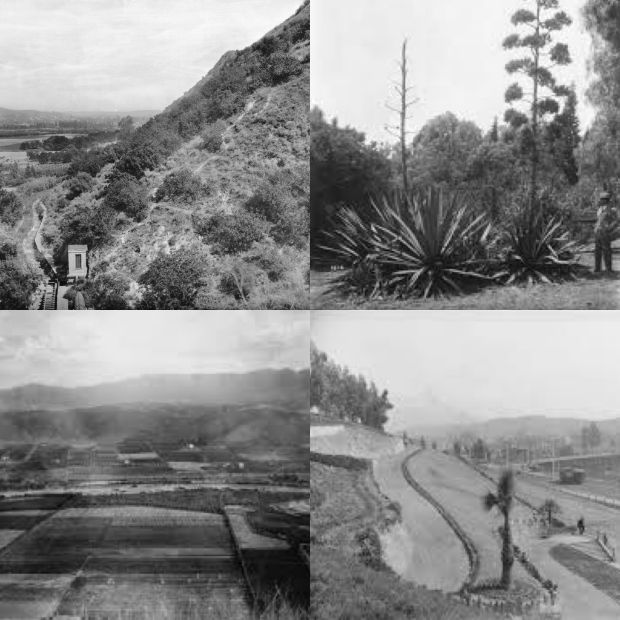
When the Edendale red car line ceased operations in 1940 and the Glendale Freeway was built, the neighborhood was essentially split into two distinct sections overnight. What to call this new neighborhood south of the 2? Well, because of the neighboring park below it, Elysian Heights seemed to make the most sense.
Elysian Heights as we know it today began to develop in the early 1900s when the Semi-Tropic Spiritualist’s Association laid out their first tract in 1905. They left portions of land intentionally empty as a public space to hold their revivals and seances and drinking parties. The Spiritualists who lived on the hills surrounding the campground would come down and gather in the field to drink and dance the night away. At one of these drinking parties in 1908 Deputy Sheriff John Thorne either got thrown out of a window, or, as he told it, leapt out of a window to escape the rowdies consumed with drink inside.
Since the 1910s, Elysian Heights, along with what was once known as Edendale, have been home to many counter-culture, political radicals, artists, writers, architects and filmmakers in Los Angeles. The children of many progressives attended school at the storied Elysian Heights Elementary during the 1930s, ’40s and ‘50s and continue to do so today. The school is a beauty in and of itself and is nestled in the Elysian Heights Ravine. The school’s lush greenery, like many sections of Elysian Heights, is fed by an underground water source. The author Beverly Mason was principal there for many years, and Toshi Ito, the mother of noted judge Lance Ito, taught kindergarten and 1st grade there for many years as well.
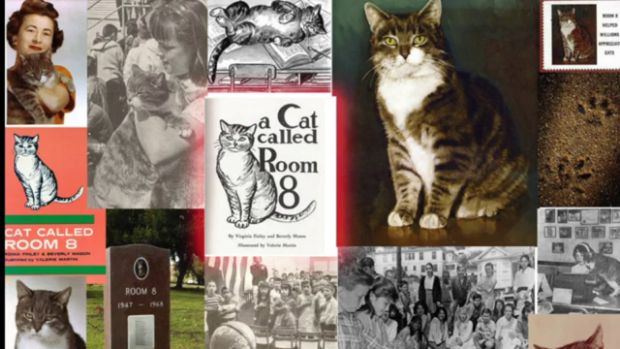
You may have heard about a cat called Room 8. Room 8 first made his appearance in 1952, wandering into the elementary school during recess and ransacking the children’s lunches. The students named him after the room where they found him. He lived at the school while classes were in session and then disappeared during the summer, returning again only when students did. For the 16 years following his arrival, he wove himself into the community and Los Angeles history. He was once the most popular cat in the country.
Today, like the Semi-Tropic Spiritualists, the neighbors of far north Elysian Heights have over the years managed to delay the development of a gently sloping hillside shaded by a forest of towering eucalyptus and oak trees.
Like nearby Franklin Hills in Los Feliz, there are a number of public stairways that are awesome for short cuts and workouts.
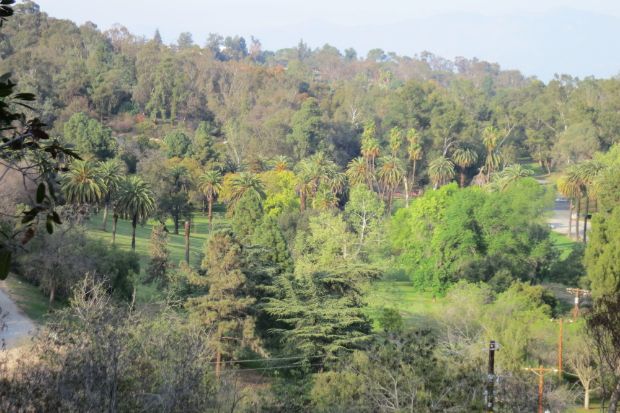
The area’s proximity to downtown is another reason for the popularity of Elysian Heights. Families began moving into the Elysian Heights area during the real estate boom of in the 1800’s. New residents ran the gamut from factory works to artists, musicians, filmmakers, and counter-culture activists with an ethnic and economic mix of true diversity. This hilly area of Echo Park still draws a diverse crowd and little has changed in this urbanized wooded area still visited by a plethora of wildlife from raccoons to coyotes.
Elysian Heights is also known for architecturally notable and historic homes such as the Paul Landacre House, the Klock House, the Judd-Atwater bungalows, the Ross House (Al Nozaki, the art famed director who designed the Martian War Machines George Pal’s War of the Worlds, lived there during the 1950’s and 1960’s), and Rudolph Schindler’s Southall House.
Elysian Heights has also been home to many musicians throughout the 1960s and 1970s and into today. Singer Lana del Rey purchased a beautiful home here in 2018. Del Rey is neighbors with actress and model Emily Ratajkowski. Former residents also include Los Angeles Mayor Eric Garcetti and wife Amy Wakeland.
Move to Elysian Heights and you’ll be in good company.
Thank you for reading!
Want to go learn about great hikes in Elysian Park and Elysian Heights? Go here!